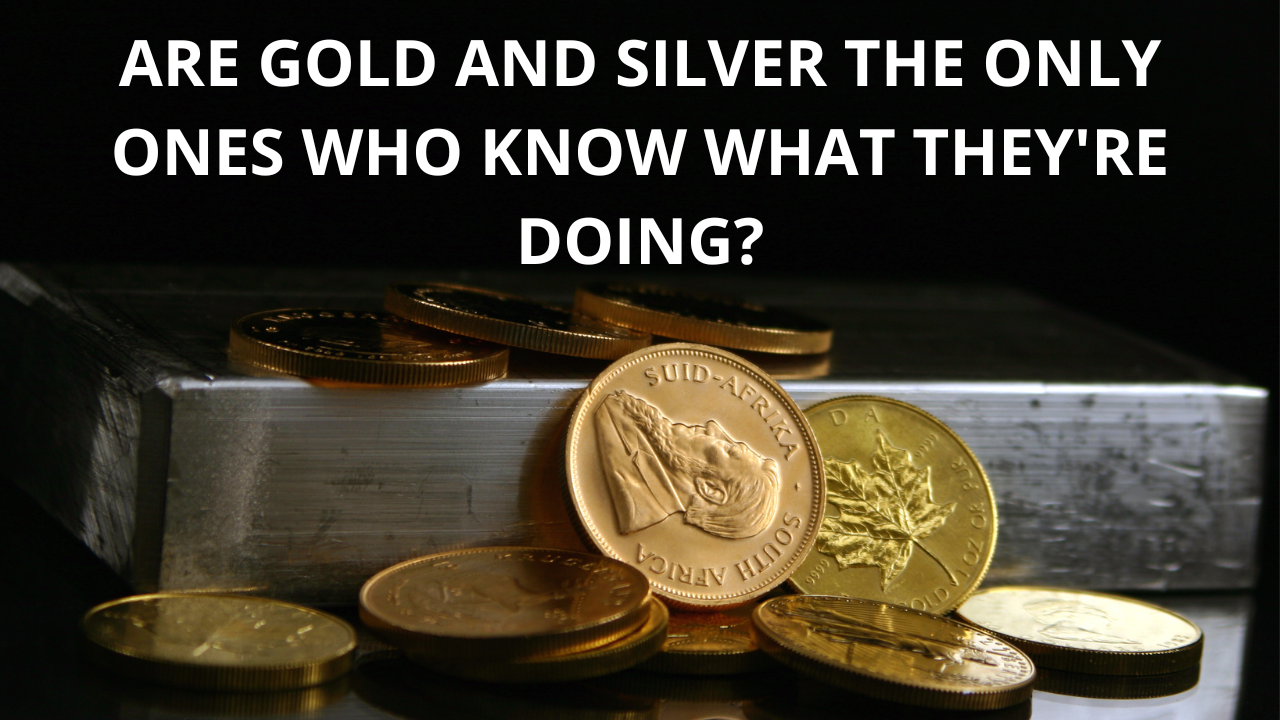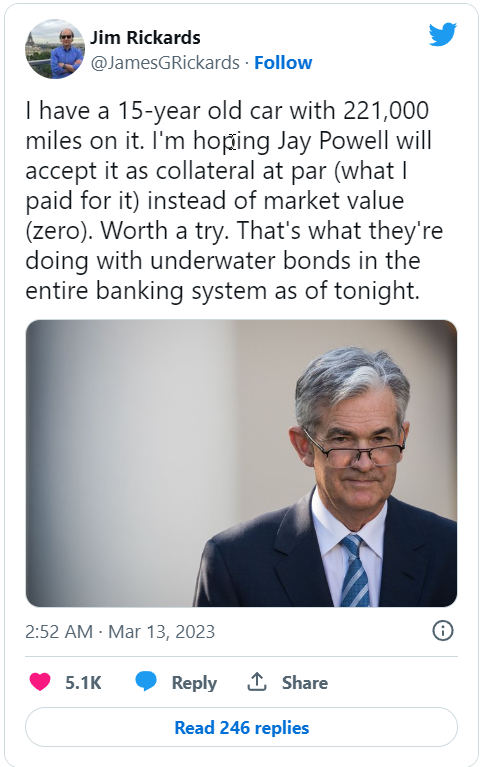
Gold and silver prices are significantly higher on Monday as markets expressed concern over the US banking system and the desperate measures being taken by officials to keep the ship afloat, amidst contagion fears.
When the ranking member of the US House Financial Services Committee goes on CNBC to reassure markets about the current turmoil then one would hope we might see some calm. But when that same member refers to the disaster that is Silicon Valley Bank as ‘Silicone’ Valley Bank then there might be even more cause for concern than there was prior to her appearance.
Congresswoman Maxine Waters was on CNBC in an attempt to let markets know that the US financial system and central banks have had their warning and they are listening, but does anyone believe them? It seems that the markets are perhaps a little tired of being reassured by US officials. After all, these are the same officials who were telling us about 18 months ago that inflation was transitory and there was no need to increase rates.
This same central bank now looks like a swan trying to escape a hungry piranha – trying to look good whilst paddling like a maniac below the surface. The Fed has been forced to put in place a guaranteed facility in order to protect U.S. banks from a potential $600 billion in loss from their bond portfolios.
What’s next?
Everyone is asking if there really is no limit to the Fed’s balance sheet. And it seems Maxine Waters has answered this loud and clear – nope, there really isn’t. They are happy to guarantee any kind of crap in order to keep the charade going.
The Federal Reserve’s guaranteed facility would enable banks to convert their distressed assets, such as the treasury portfolio of SVB that lost $1.8 billion, into cash without incurring any losses. It appears to be a form of Fed bailout, yet in order to address inflation, it’s likely that the Federal Reserve will raise interest rates once again (tighten monetary policy), which is what caused the bond portfolio’s initial value decline.
See Jim Rickards’ reaction to the Fed’s moves:

The collapse of Silicon Valley Bank has drawn attention to the possibility that higher bond yields and lower prices may not have been adequately taken into account or hedged elsewhere in the financial system. This is despite all of the warning signs just six months ago in the UK pension crisis.
Speaking of the UK economy…despite the HSBC rescue of SVB, that was announced overnight, the FTSE has fallen harder and faster than it did following the Truss budget. The UK government is working hard and fast to prevent mass contagion from the SVB collapse. Support may still be needed for tech firms that had funds tied up in parts of SVB. This is in addition to whatever fallout comes from the worldwide pain felt across stocks.
What Happens to Europe Now?
And what about in Europe? Credit Suisse, which is embedded in the European banking system and is a key player in its stability, has seen its credit default swaps hit new highs this morning, sending the share price plummeting. Yes, the Swiss bank might have its own range of problems but what does this bank, and SVB and ALL banks have in common??
Rising interest rates. Or more specifically interest rates that have been rising far too late, by too little and not for long enough.
How will the ECB react? To ignore these alarm bells from across (both) ponds, would be to ignore a hammer over the head. After eight years of low interest rates, the 300 basis-point tightening since July is likely having a much more pronounced impact on the eurozone than other economies.
Europe was already heading toward recession before the pandemic, and its recovery has been slow. Additionally, Europeans are more inclined to save through bonds than stocks, so retail investors are also suffering from decreased bond values. Therefore, it might be wise to exercise caution before pushing ahead with any further 50 basis-point rate increases.
Ultimately how this will play out and how long the game will take we don’t know. In truth we’re surprised it’s gone on as long as it has. One thing we do know is that gold and silver are coming to the fore and playing along exactly as they’re supposed to.
Buy Gold Coins

GOLD PRICES (USD, GBP & EUR – AM/ PM LBMA Fix)
10-03-2023 1834.95 1861.25 1530.35 1539.44 1731.09 1743.62
09-03-2023 1817.50 1831.40 1530.52 1536.73 1721.35 1731.77
08-03-2023 1813.35 1816.30 1531.74 1537.86 1719.60 1724.03
07-03-2023 1843.05 1826.55 1535.63 1529.19 1729.33 1719.88
06-03-2023 1851.70 1849.05 1539.87 1538.78 1740.78 1733.67
03-03-2023 1845.55 1841.15 1538.45 1537.36 1738.69 1737.31
02-03-2023 1831.75 1836.20 1529.33 1537.08 1723.86 1731.54
01-03-2023 1833.50 1841.25 1521.81 1532.84 1720.19 1725.80
28-02-2023 1810.20 1824.60 1498.66 1502.92 1705.93 1714.94
27-02-2023 1809.05 1818.65 1512.00 1512.75 1714.26 1717.35
Buy gold coins and bars and store them in the safest vaults in Switzerland, London or Singapore with GoldCore.
Learn why Switzerland remains a safe-haven jurisdiction for owning precious metals. Access Our Most Popular Guide, the Essential Guide to Storing Gold in Switzerland here


